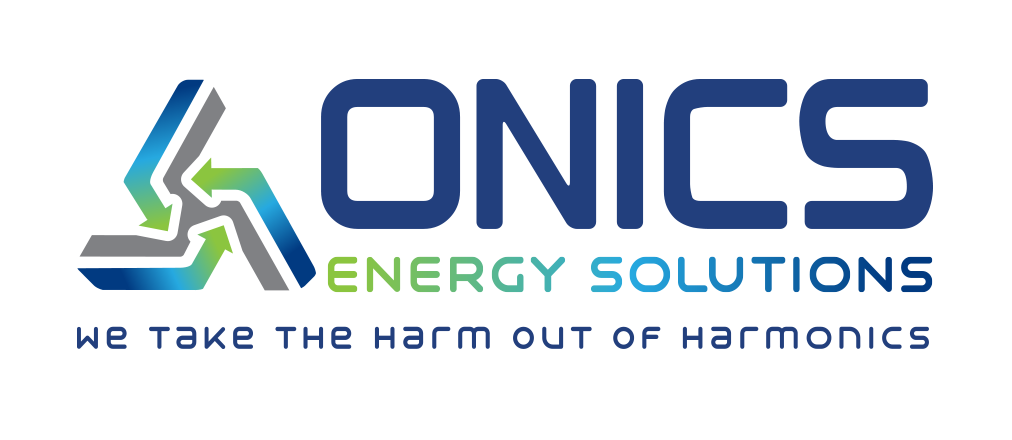Boosting Energy Efficiency with Onics OES-11 Passive Harmonic Filters: A Case Study
The exploration of neutral and ground energy losses has been an area that has received limited past research and development. However, recent advancements in technology and data science have led to promising developments in this field.
Neutral and ground energy losses can significantly impact the efficiency and reliability of electrical systems. Identifying and addressing these losses can lead to substantial energy savings, improved equipment reliability, reduced emissions, and lower operating costs.
Dr. Howard Penrose Ph.D., CMRP of MotorDoc LLC partnered with Onics Energy Solutions in 2022 to focus on plant-wide and internal energy systems, along with the data science involved in assessing the impact of incoming power on internal electrical systems. This collaboration has contributed to the growing understanding of neutral and ground energy losses, offering new opportunities for improving energy efficiency and reducing the environmental footprint of various industries.
The importance of energy efficiency has become a major focus for industries across the globe. Onics Energy Solutions is at the forefront of innovative technology to improve energy efficiency, reduce costs, and minimize environmental impact. This blog post summarizes a case study on the installation of Onics Ground and Neutral Filters and discusses the features and benefits of the Onics OES-11 Passive Neutral and Ground Harmonic Filter.
Case Study Summary
As nonlinear loads continue to rise in commercial and industrial facilities, there is a corresponding increase in current flow and kilowatt losses in grounds and neutrals. This phenomenon leads to I2R losses, false loads, and additional strain on the cores of sub and main transformers, which directly impacts energy costs and greenhouse gas emissions (GHG). The potential effects can be measured using portable and continuous monitoring EMPATH ECMS-E1 electrical signature analyzers at various metering points, as well as through pre- and post-monitoring at utility meters and switchgear.
In this case study, Dr. Penrose examines a mid-sized biodiesel facility that was pre-selected based on power harmonics, ground, and neutral analysis during the installation of Onics equipment. The EMPATH device was connected to the switchgear and monitored through the MotorDoc® cloud-system, employing AI analytics to detect anomalous activity and provide energy forecasting. It is important to note that actual energy savings calculations are based on utility kWh data, with MotorDoc data offering granular information for unusual variations.
After a partial installation of the Onics OES-11 Passive Neutral and Ground Harmonic Filters, the facility experienced an immediate energy reduction of nearly 10 percent with additional savings expected in the coming weeks due to the self-learning / self-adapting technology in the Onics OES-11 devices.
Case Study Highlights:
Initial Assessment: Before the installation, the facility was experiencing issues related to harmonics and high neutral current, which led to increased energy costs, equipment stress, and potential downtime. The Empath system was employed to assess the facility's energy consumption and determine the root cause of the issues.
Solution Implementation: Onics OES-11 Passive Neutral and Ground Harmonic Filters were installed across a two-day period at panel neutrals, grounds, MCC grounds, VFDs, PLCs and other electronic systems. For the case study, the facility maintained standard loads until noon and then phased systems out of service for an outage. During the four-hour period just over 30 percent of the Onics OES-11 devices were installed.
Monitoring and Analysis: During the installation, both the MotorDoc monitoring system and an installed Eaton energy monitor were used to observe kilowatt demand changes. The Empath system continuously monitored the energy consumption and performance of the facility. This allowed the team to evaluate the effectiveness of the Onics OES-11 solution and make any necessary adjustments in real-time.
Results: Upon installation of one-third of the Onics OES-11 devices, the facility experienced a significant reduction in harmonics, decreased neutral current, and improved energy efficiency, which will lead to reduced energy costs, prolonged equipment life, and minimized environmental impact.
The demand drop was approximately 70 kW from an average of 650 kW resulting in a drop of nearly 10% usage which is equivalent to kWh.
About The Onics OES-11 Passive Neutral and Ground Harmonic Filter
The Onics OES-11 is a cutting-edge passive harmonic filter designed to address the challenges of harmonics and neutral current in electrical systems. It is suitable for industrial, commercial, and institutional facilities. The key features and benefits of the OES-11 filter include:
Harmonics Mitigation
The Onics OES-11 filter effectively mitigates harmonics in electrical systems, which can cause a range of issues such as overheating, equipment stress, and increased energy consumption. By reducing harmonics, the filter improves power quality and overall system performance.
Neutral Current Reduction
The OES-11 filter reduces neutral current by balancing the phases in the electrical system. This results in lower energy costs, reduced equipment stress, and improved energy efficiency.
Easy Installation
The Onics OES-11 Passive Neutral and Ground Harmonic Filter is hardwired in parallel on the cold side of every wye-connected neutral and ground application in a facility. The device can be easily installed on existing electrical infrastructure without causing any disruption to the facility's operation. This ensures a seamless integration with minimal downtime.
Environmental Impact
The OES-11 filter contributes to a greener and more sustainable environment by improving energy efficiency and reducing energy consumption. This not only lowers operating costs but also helps organizations meet their environmental goals.
Conclusion
The case study demonstrates the effectiveness of the Onics OES-11 Passive Neutral and Ground Harmonic Filters in improving energy efficiency and reducing costs for industrial facilities. Although an immediate energy savings of nearly 10 percent was reported, Dr. Penrose and the Onics Energy Solutions team anticipate additional savings over the coming weeks. Ultimately, the Onics OES-11 device offers a viable solution to mitigate harmonics and neutral current issues, with tangible results that benefit both the organization and the environment.


